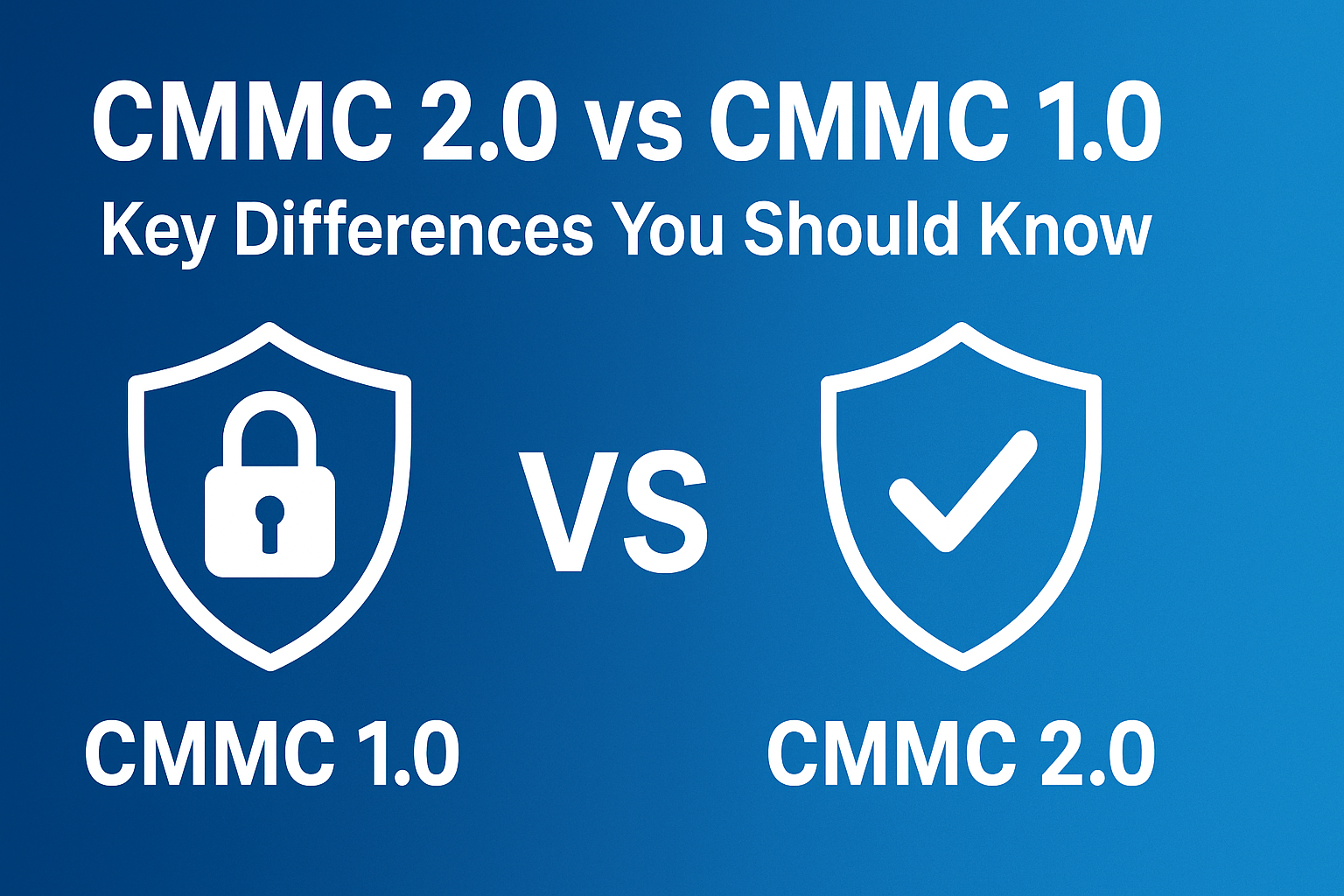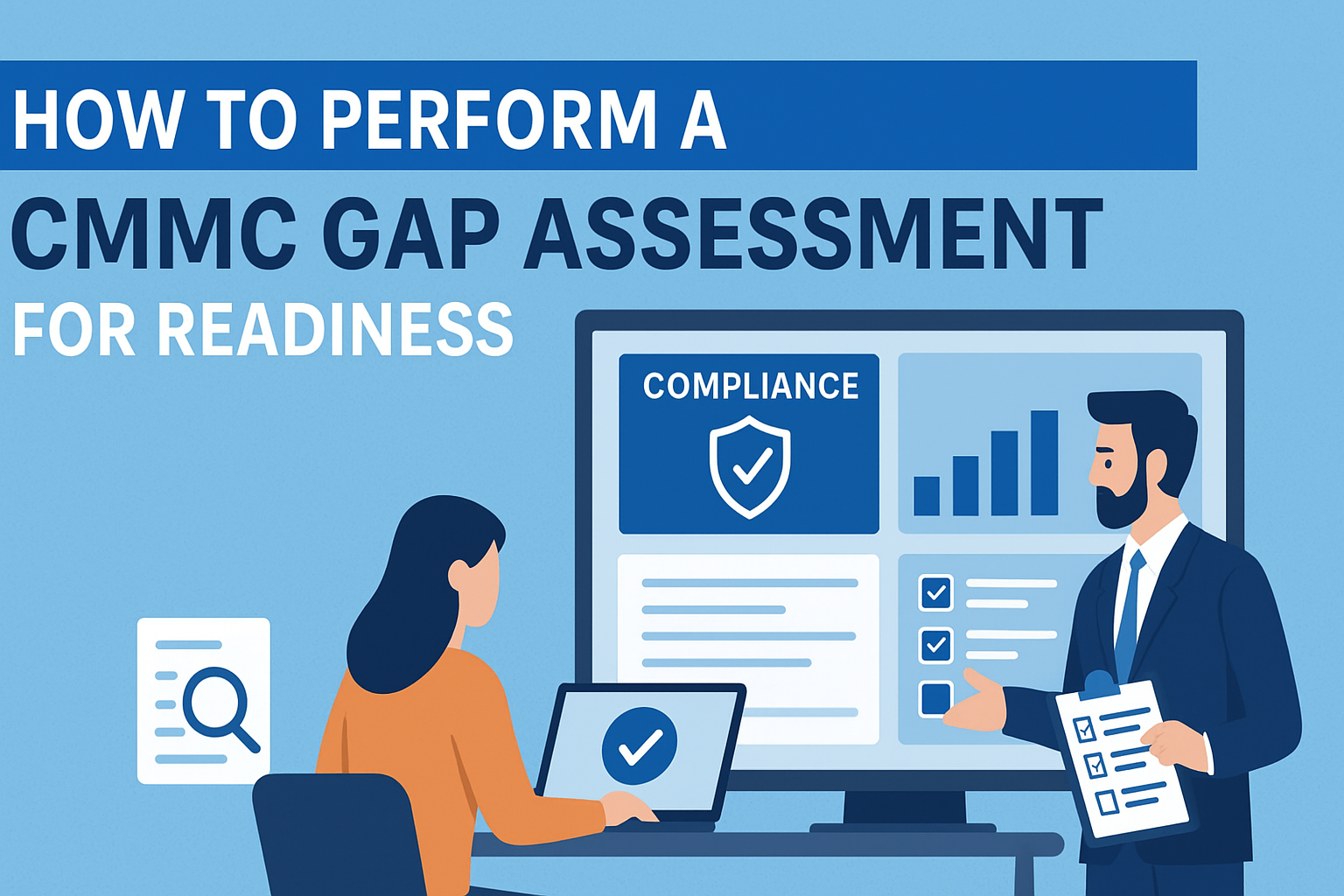In today’s digital-first world, cybersecurity isn’t optional—it’s essential. For companies doing business with the U.S. Department of Defense (DoD), compliance with the Cybersecurity Maturity Model Certification (CMMC) is a must. However, the introduction of CMMC 2.0 has left many organizations wondering how it differs from CMMC 1.0 and what changes they need to prepare for.
If you’re navigating this transition, this guide breaks down the key differences between CMMC 1.0 and 2.0, so you can understand what’s new, what’s gone, and what you need to do next.
🔑 What is CMMC?
The Cybersecurity Maturity Model Certification (CMMC) is a framework designed to protect Controlled Unclassified Information (CUI) and Federal Contract Information (FCI) shared with defense contractors. It provides a unified cybersecurity standard to ensure the defense industrial base (DIB) maintains strong security practices.
🆚 CMMC 1.0 vs CMMC 2.0: The Key Differences
Here are the major changes you should know:
1. Simplified Maturity Levels
- CMMC 1.0: Featured five levels of maturity (from basic cyber hygiene to advanced/progressive practices).
- CMMC 2.0: Reduced to three levels, aligning more closely with existing standards like NIST 800-171.
- Level 1: Foundational – basic safeguarding of FCI
- Level 2: Advanced – aligns with NIST SP 800-171, focuses on protecting CUI
- Level 3: Expert – based on NIST SP 800-172, for the highest-risk programs
✅ Impact: Easier for businesses to identify their required level and focus resources effectively.
2. Reduced Assessment Burden
- CMMC 1.0: Required third-party certification for almost all levels.
- CMMC 2.0: Introduces self-assessments for Level 1 and some Level 2 contractors, with third-party assessments required only for prioritized contracts.
✅ Impact: Lowers compliance costs and speeds up certification for small and mid-sized contractors.
3. Elimination of CMMC-Unique Practices
- CMMC 1.0: Added 20+ unique practices beyond NIST standards.
- CMMC 2.0: Removed these extra practices, fully aligning with NIST 800-171 requirements.
✅ Impact: Streamlined process and better alignment with existing federal cybersecurity standards.
4. Introduction of POA&Ms (Plans of Action & Milestones)
- CMMC 1.0: Required full compliance before contract award.
- CMMC 2.0: Allows use of POA&Ms to close gaps over time, giving contractors flexibility to work toward compliance.
✅ Impact: More practical for businesses still maturing their cybersecurity posture.
5. Greater Focus on Accountability
- CMMC 2.0 emphasizes affirmations from senior company officials to ensure executive-level accountability.
- This creates a stronger culture of cybersecurity awareness and leadership buy-in.
🚀 Why CMMC 2.0 is a Positive Shift
CMMC 2.0 isn’t about lowering the bar—it’s about making compliance more accessible, affordable, and achievable while maintaining strong cybersecurity protections. By streamlining requirements, reducing costs, and aligning with NIST, the DoD is helping defense contractors focus on real security improvements instead of red tape.
📝 Final Thoughts
If your business handles DoD contracts, the transition from CMMC 1.0 to 2.0 is good news—but you still need to act. Begin by:
- Identifying your required level (1, 2, or 3)
- Conducting a gap assessment against NIST 800-171 (if Level 2 or above)
- Developing POA&Ms to close any gaps
Proactive compliance will keep your business competitive in the defense supply chain while strengthening your overall cybersecurity posture.





